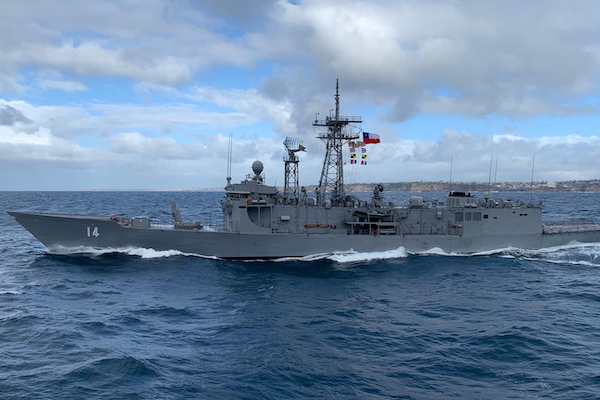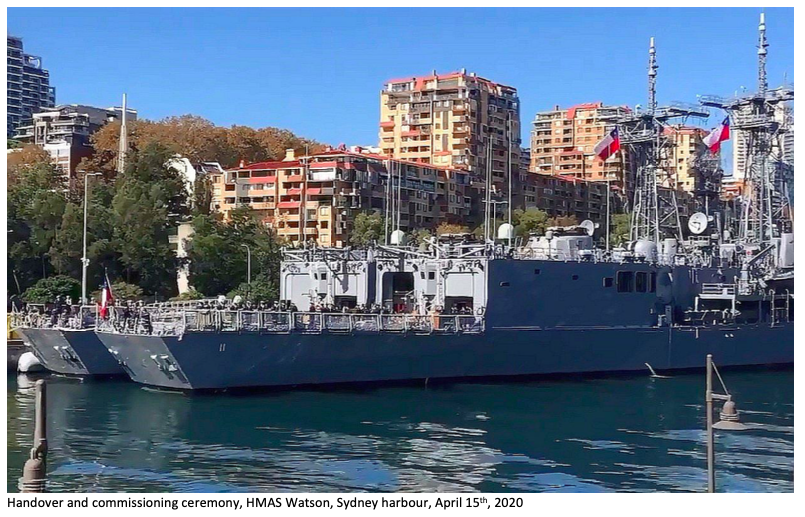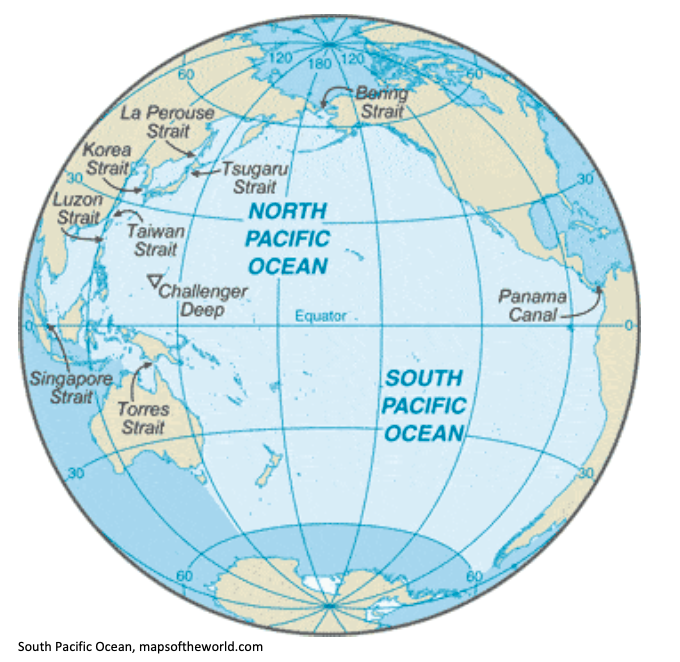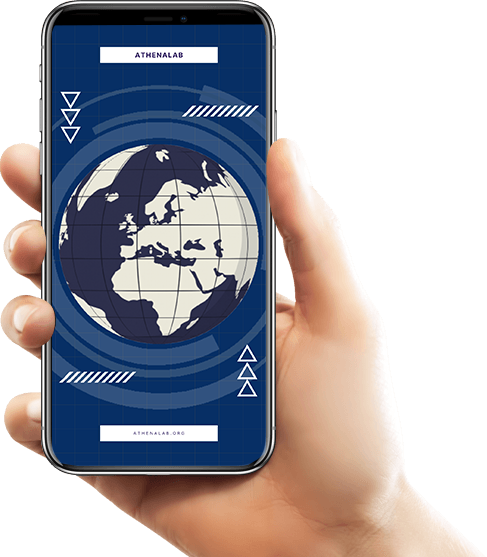
Richard Kouyoumdjian Inglis
Recently the Chilean Navy took control of the former HMAS “Melbourne” and HMAS “Newcastle” and renamed them “Capitán Prat” and “Almirante Latorre”, replacing the type L class frigates that had the same names and that Chile had bought from the Royal Netherlands Navy in 2005 and that were decommissioned in Talcahuano at the end of 2019.

Microsoft Word – The South Pacific Strategic Alliance.docx
Chile got 2 frigates in pretty good shape and well equipped. It allows the Chilean Navy to replace the capabilities that were provided by the weapons systems based on the SM-1 missile for the more modern SM-2 allowing the Chilean fleet to keep its AA capacity that had been lost with the EOL of the SM-1, but the real value is not necessarily in the material aspects of the transaction, but in the fact that this is the first event of this kind between the Australian and Chilean Navies, one that brings to a very happy conclusion years of relationship between the RAN and its Chilean counterpart, that until last year was mainly made visible by the 13 visits of the tall ship “Esmeralda” to Sydney, with the last one taking place in August 2019.
Why is this important, it is because Chile and Australia are two like-minded South Pacific countries that not only share the fact that they are located in the southern hemisphere, but more important yet, share several common interests such as their desire to enjoy a free and stable Pacific Ocean that will allow them to continue trading with Asianeconomies, a desire that is more important yet when the great power competition is placing the stability of the Pacific in doubt and may be putting the burden of doing so on the countries that need and depend on trading with the nations of the Western Pacific.
Having said that, not only our countries are like minded and share common interests, but also have huge opportunities in front of them that when looking at the world map from another perspective become evident. We have a tremendous ocean space that goes all the way from Australia on one end to Chile on the other one. An ocean space we also share with New Zealand, the South Pacific islands and the French Polynesia and that is limited by the Antarctica on the southern end. We need to get organized before some others decide that they have an interest, and before that interest also includes the Antarctic continent, one where Australia, New Zealand and Chile have rightful claims that do not overlap with each other as is the case with other countries.

Microsoft Word – The South Pacific Strategic Alliance.docx
The relationship between Australia and Chile, and that should include New Zealand, is one that has been developed so far by the navies, but that needs to go beyond the naval and maritime aspects. These aspects already consider that the South Pacific search and rescue responsibilities are mostly shared by Chile and NZ. It needs to go beyond and consider the
other services and go beyond the Australian mining interests in Chilean cooper. It does not mean that the naval and maritime relationship ends with the transfer of the frigates. I would expect this to be the beginning of a higher level of relation, one that beyond the visits and friendship of the admirals that command the institutions, and that includes officers and rating exchanges, training programs, joint operations in the Western Pacific, where both of us have common interests, and more important yet, joint naval construction programs. Australia has taken the decision to develop shipbuilding and so should Chile. If we want to become maritime powers, shipbuilding is a must and we should seriously look into ways that could be of value for both navies.
My dream is a South Pacific Strategic alliance with two regional maritime powers, Australia on one end and the Chile on the other, supported by New Zealand and the South Pacific Islands. It’s time to start looking at the map from the south and understanding that when Chile looks into the Pacific it sees New Zealand and Australia as its natural partners, partners that are liked minded countries, that have liberal democratic values and share common interests that go beyond the fact of being located in the southern hemisphere.
Richard Kouyoumdjian Inglis
Vicepresidente de AthenaLab
Original article published on The Australian Naval Institute page.
Temas relevantes


No te pierdas ninguna actualización
Suscríbete a nuestro newsletter de forma gratuita para mantenerte informado de nuestros lanzamientos y actividades.
Suscribirse



